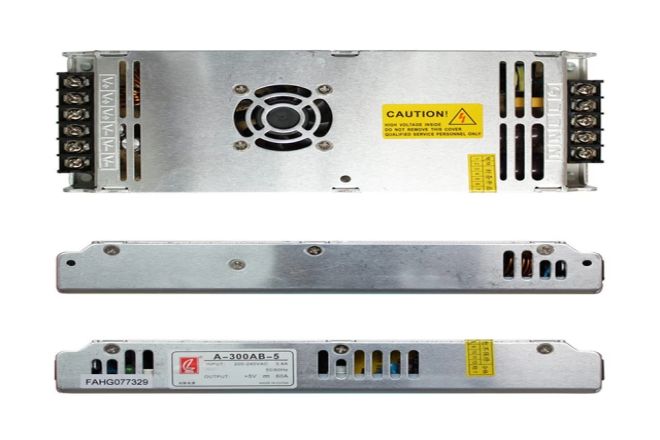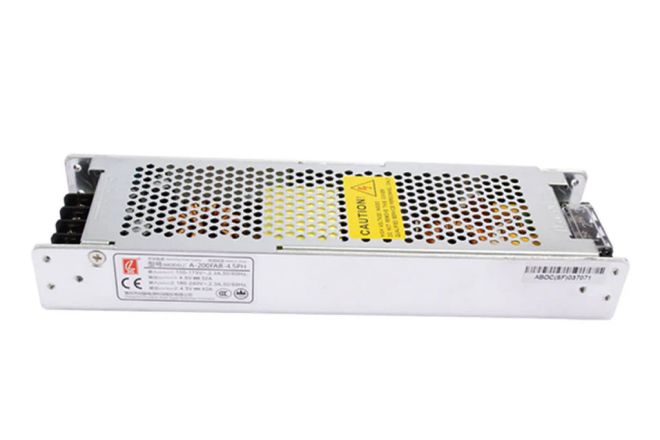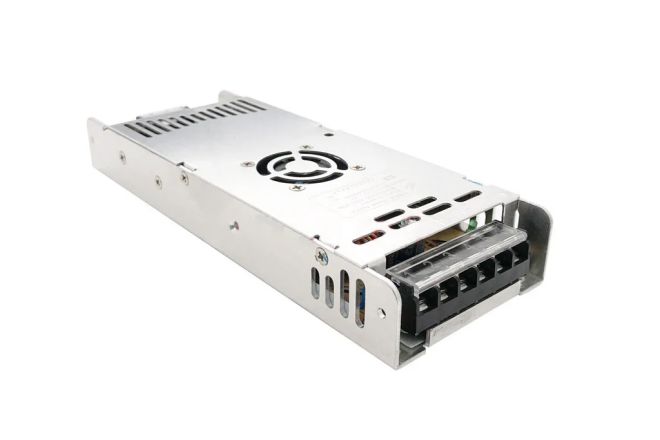序章

From neon billboards in bustling cities to the passionate scenes of sports events to the precise display of business meetings, LED表示画面 have become an important carrier for the integration of information dissemination and visual art with their excellent display effects, high flexibility, and wide application scenarios.
However, behind all these wonderful things, there is an indispensable behind-the-scenes hero – the LED display screen 電源, which silently supports the stable operation of the entire system and provides a steady stream of power for every visual feast.
The power supply, as the “heart” of the LED display screen, and its performance and stability are directly related to the display effect, energy consumption level, and service life of the display screen.
Therefore, an in-depth understanding of the working principle, type characteristics, selection points, and maintenance of the LED display screen power supply is of great significance to ensure the long-term stable operation of the display screen, improve user experience, and reduce operating costs.
1. Basic concept of LED display screen power supply
- Definition and function
In short, the LED display screen power supply is a core component of power conversion and distribution. It is responsible for efficiently converting widely used alternating current (AC), such as the power in the home grid or commercial grid, into direct current (DC).
This conversion process is crucial because LED lamp beads (the basic light-emitting units that makeup LED displays) require stable direct currents to drive their light.
The LED display power supply not only completes the conversion of electrical energy but also ensures that constant and accurate voltage and current are provided to each LED lamp bead through the internal precision circuit design to meet its light-emitting needs, thereby ensuring uniform brightness and color performance of the entire display.
- Importance
The stability and efficiency of the LED display power supply have a vital impact on the overall performance of the display. First, stable power output can ensure that the LED lamp beads will not flicker or have color deviations due to voltage or current fluctuations during operation, thereby maintaining a highly accurate color reproduction of the display, allowing viewers to enjoy a real and vivid visual experience.
Second, the efficiency of the power supply is directly related to the energy consumption level of the display. An efficient LED display power supply can reduce energy loss during the conversion process and convert more electrical energy into the light-emitting energy of the LED lamp beads, thereby reducing the energy consumption of the overall system and achieving the goal of energy conservation and emission reduction.
This is especially important for large outdoor LED displays because they often need to run for a long time, and the use of efficient power supplies can significantly reduce operating costs.
In addition, the reliability of the power supply is also one of the key factors affecting the long-term service life of LED displays.
High-quality power supply design has perfect protection mechanisms, such as overvoltage protection, overcurrent protection, short-circuit protection, etc., which can quickly cut off the power output under abnormal conditions to protect the LED lamp beads and other parts of the display from damage. This high reliability ensures that the display can operate stably in various harsh environments and prolong its service life.
2. Overview of LED display power supply types

1). Classification by output voltage
1.1). Constant-voltage power supply
- 特徴:
The output voltage of the constant voltage power supply is constant, and its output voltage remains within the preset range regardless of how the load changes. This power supply is suitable for occasions with high voltage stability requirements.
- 適用可能なシナリオ:
Although the application of constant voltage power supply in LED display is not as common as constant current power supply, in some specific scenarios, such as LED light strips, decorative lights, and other occasions used in series, constant voltage power supply can simplify circuit design and reduce costs.
2). Advantages and disadvantages analysis:
2.1). Advantages: Simple circuit design and relatively low cost.
- 短所:
In LED display screens, due to the voltage drop difference of LED lamp beads and the characteristics of the series circuit, the constant voltage power supply may not be able to ensure that each LED lamp bead obtains uniform current, thereby affecting the brightness and uniformity of the display.
2.2). Constant current power supply
Why it has become the mainstream choice for LED display screens: LED display screens are composed of a large number of LED lamp beads, and the luminous characteristics of each lamp bead may be slightly different.
A constant current power supply can ensure that each LED lamp bead obtains a constant current, thereby maintaining the stability of its luminous brightness and color. This is essential for improving the overall display effect of the display screen and extending the service life of the LED lamp beads.
2.3). Advantage analysis:
Stability: A constant current power supply can ensure that the LED lamp beads maintain a stable luminous state for a long time, reducing light decay and color shift.
Uniformity: By providing a constant current to each LED lamp bead, the constant current power supply can ensure the brightness uniformity of the display screen and improve the visual effect.
Protection function: Constant current power supply usually has functions such as overload protection and short circuit protection, which can protect the LED lamp beads and the power supply itself under abnormal conditions.
2.4). Classification by power level
Low power power supply: Usually used to drive small LED display screens or single LED lamps. Due to its low power, the cost is relatively low, but it may not meet the needs of large display screens.
Medium power supply: Suitable for driving medium-sized LED display screens or a group of LED lamps. Medium power supply has achieved a good balance between power and cost and is a more common choice on the market.
High-power power supply: used for large LED display screens or occasions with high brightness requirements. High-power power supply has strong output capacity and stability, but the cost is relatively high. When selecting, it is necessary to make comprehensive considerations based on the actual needs and budget of the display screen.
2.5). Special type power supply
Waterproof power supply: with a waterproof function, suitable for LED display screens in outdoor or humid environments. Waterproof power supply usually adopts special packaging materials and structural design to ensure normal operation in harsh environments.
Adjustable power supply: power supply with adjustable output voltage or current. This power supply is very useful in the debugging and maintenance of LED display screens. The output voltage or current can be adjusted as needed to meet different display requirements.
In summary, there are various types of LED display screen power supplies, and the selection needs to be comprehensively considered according to actual needs and application scenarios. Constant current power supply has become the mainstream choice of LED display screens due to its stability and uniformity advantages
Classification by power level helps to select the appropriate power supply according to the scale and brightness requirements of the display screen; special types of power supplies such as waterproof power supply and adjustable power supply meet the use requirements in specific environments.
3. Key points for selecting LED display power supply
When selecting a power supply for an LED display, you need to consider multiple aspects to ensure that the power supply can meet the operating requirements of the display and perform well. Here are a few key selection points:
1). Power matching
- Determine the total power demand:
First, it is necessary to clarify the total power demand of the LED display. This usually depends on factors such as the area, resolution, and brightness of the display.
Generally speaking, the power of a square meter of LED display is between 200 watts and 1500 watts, and the specific value needs to be determined according to the specific parameters of the display.
- Choose a power supply with appropriate power:
After determining the total power demand of the display, you need to select a power supply with matching power.
The power of the power supply should be slightly greater than or equal to the total power demand of the display to ensure that the power supply can stably and reliably power the display.
2). Efficiency and energy-saving
- The importance of high conversion efficiency:
A power supply with high conversion efficiency can reduce the loss of energy during the conversion process and improve energy utilization. Therefore, when selecting a power supply, products with high conversion efficiency should be given priority. Generally speaking, the conversion efficiency of a high-quality power supply should reach more than 80%.
- Energy-saving design:
In addition to conversion efficiency, you can also pay attention to the energy-saving design of the power supply. For example, some power supply products have intelligent adjustment functions, which can automatically adjust the output power according to the actual load of the display screen, thereby further reducing energy consumption.
3). Stability and reliability
- Safety feature considerations:
The stability and reliability of the power supply are directly related to the operation effect and service life of the display screen.
Therefore, when choosing a power supply, you should focus on its safety features, such as overvoltage protection, overcurrent protection, and short-circuit protection. These protection mechanisms can quickly cut off the power output under abnormal conditions to protect the display screen and the power supply itself from damage.
- Stability test:
Before purchasing a power supply, you can understand the stability test report of the product or conduct actual tests. The test can evaluate the stability and reliability of the power supply during long-term operation.
4). Cost-effectiveness
- Balance the initial investment and long-term operating costs:
When choosing a power supply, you need to balance the initial investment and long-term operating costs. Although a power supply with a higher initial investment may have better performance and a longer service life, its long-term operating costs also need to be considered. Therefore, when choosing a power supply, you should consider its performance, price, service life, and other factors.
- Cost-effectiveness evaluation:
By comparing power supply products of different brands and models, evaluate their cost-effectiveness. Choosing products with higher cost-effectiveness can reduce the initial investment cost while ensuring performance.
5). Brand and after-sales service
- Choose a well-known brand:
Well-known brands usually have better product quality and a more complete after-sales service system. Choosing power products from well-known brands can reduce the risk of use and improve the user experience.
- Pay attention to the quality of after-sales service:
When purchasing a power supply, you should pay attention to the manufacturer’s after-sales service quality. Understand the after-sales service policy, distribution of maintenance outlets, response time, and other information so that you can get technical support and maintenance services on time when needed.
4. Installation and maintenance of LED display power supply

1). 設置上の注意事項
1.1). Environmental adaptability
- 温度と湿度:
The working environment temperature of the LED display power supply should be controlled within a suitable range. It is generally recommended that the ideal working temperature is -20℃ to 50℃, and the humidity should be maintained in the relative humidity range of 10% to 90%.
Avoid exposing the display to extreme temperatures, high humidity, or corrosive environments to prevent damage to the power supply or performance degradation.
- Ventilation conditions:
Ensure that the power supply installation location has good ventilation conditions to avoid overheating of the power supply due to poor heat dissipation, thereby affecting its stability and service life.
1.2). Wiring specifications
- Power supply wiring:
According to the specifications and quantity of the display, calculate the required cable length and quantity, and strictly follow the wiring specifications for wiring. The power cord should be made of reliable quality products and ensure that the connection is firm to avoid looseness or short circuits.
- Signal line wiring:
Signal line wiring should ensure stable and interference-free signal transmission. During the wiring process, pay attention to the interface type and length of the signal line, choose the appropriate connection method, and try to avoid bending and twisting to avoid damaging the internal line of the cable.
1.3). Grounding treatment
- 重要性:
Since LED is very sensitive to static electricity, excessive static electricity will cause the light-emitting diode to break down, so the LED display power supply must be grounded. Grounding can protect the equipment from static electricity and abnormal voltage or current shocks, ensuring the stable operation of the display.
- Correct approach:
Use the yellow-green two-color wire dedicated to grounding to connect and lock all power ground terminals in series, and then lead them out to the ground terminal. If there is no grounding terminal on site, it can be connected to iron water pipes or iron sewer pipes and other pipes buried in the earth and in good contact with the earth. The grounding resistance must be less than 4 ohms to ensure the timely discharge of leakage current.
2). Daily maintenance
2.1). Regularly check the working status of the power supply
Regularly check whether the output voltage and current of the power supply are normal to ensure the stability and reliability of the power supply. If any abnormality is found, the power supply should be promptly handled or replaced.
2.2). Clean the cooling system
Regularly clean the cooling system of the power supply, such as fans, heat sinks, and other components, to prevent dust and debris from accumulating and causing poor heat dissipation. You can use a soft brush to gently brush away the dust and avoid using liquid detergents to prevent damage to the internal components of the power supply.
2.3). Avoid overheating and causing failures.
Make sure there is enough ventilation space around the power supply to prevent it from being blocked by other equipment. In high temperature or poor heat dissipation environments, it is not recommended to use the display and power supply continuously for a long time to prevent overheating and causing failures.
3). Troubleshooting and handling
3.1). Common power failure phenomena
The power indicator light is off; the output voltage is abnormal; the display screen flickers or the brightness is uneven.
3.2). Cause analysis
The power indicator light may not be on because the power cord is loose or damaged, the power supply is faulty, etc.; the output voltage abnormality may be caused by power overload, overheating, overvoltage or Undervoltage, etc.; the display screen flickers or uneven brightness may be caused by unstable power supply or damaged LED lamp beads, etc.
3.3). Emergency treatment measures
First, check whether the power cord is firmly connected and whether the power socket is normal; then check whether the power indicator and output voltage are normal. If there is a problem, replace the power supply in time; finally, check whether the display screen and LED lamp beads are damaged.
If necessary, replace or repair them in time. When dealing with power failures, ensure that the power is turned off to avoid electric shock or damage to the equipment.
結論
With the continuous advancement of technology and the continuous evolution of the market, LED display power supply technology will also usher in a broader development prospect.
From high-efficiency and low-energy power supply design to intelligent and modular system solutions to the widespread application of green and environmentally friendly materials, each technological innovation will inject new vitality into the LED display industry.
最後に、LEDディスプレイについてもっと知りたい方は、 ご連絡ください。
